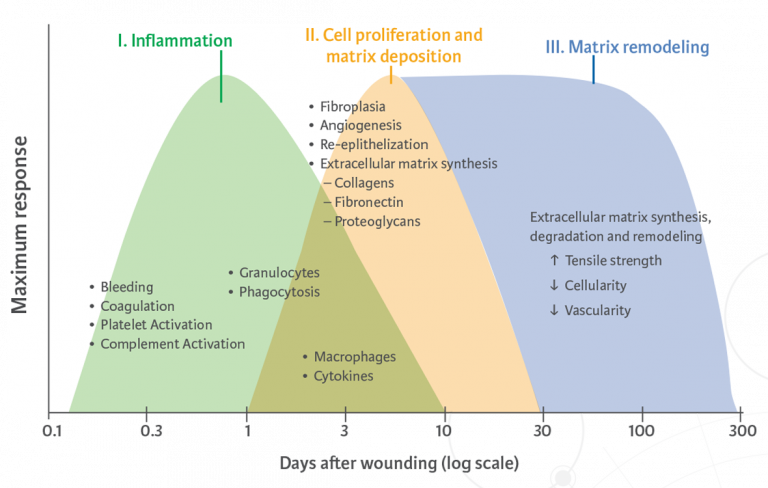
MediHoney Wound and Burn Care
Global leading line of medical-grade honey products for the management of acute and chronic wounds and burns.¹¯³
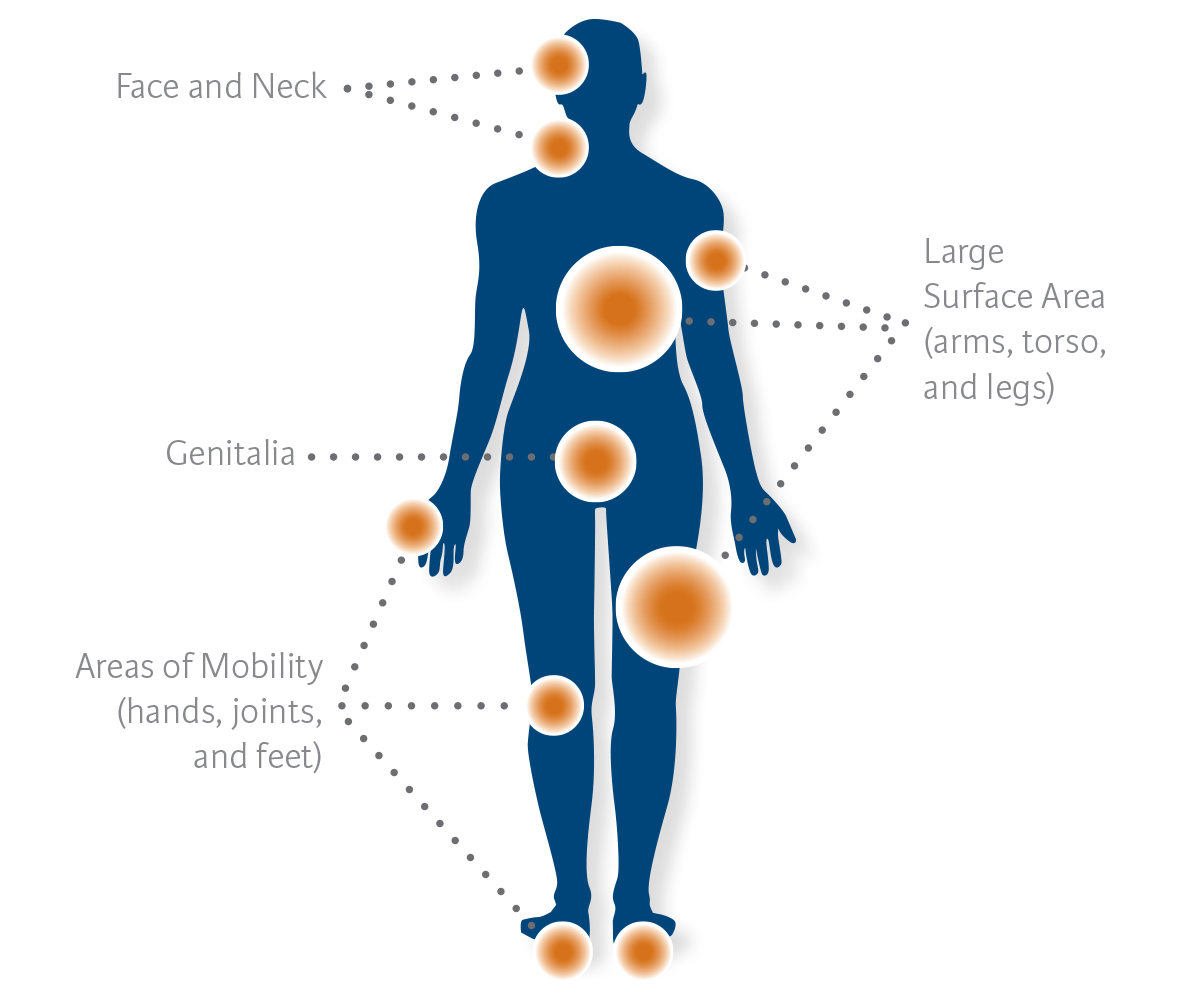
Features & Benefits
• Derived from the nectar of the Leptospermum species
• Selected, authenticated and processed using leading scientific technology to validate its purity and consistency
• Unique among honeys – maintains its effectiveness even in the presence of wound fluid¹
• The only type of honey shown in randomized controlled studies to help wounds that have stalled under first-line treatment to progress towards healing²
Product Solutions
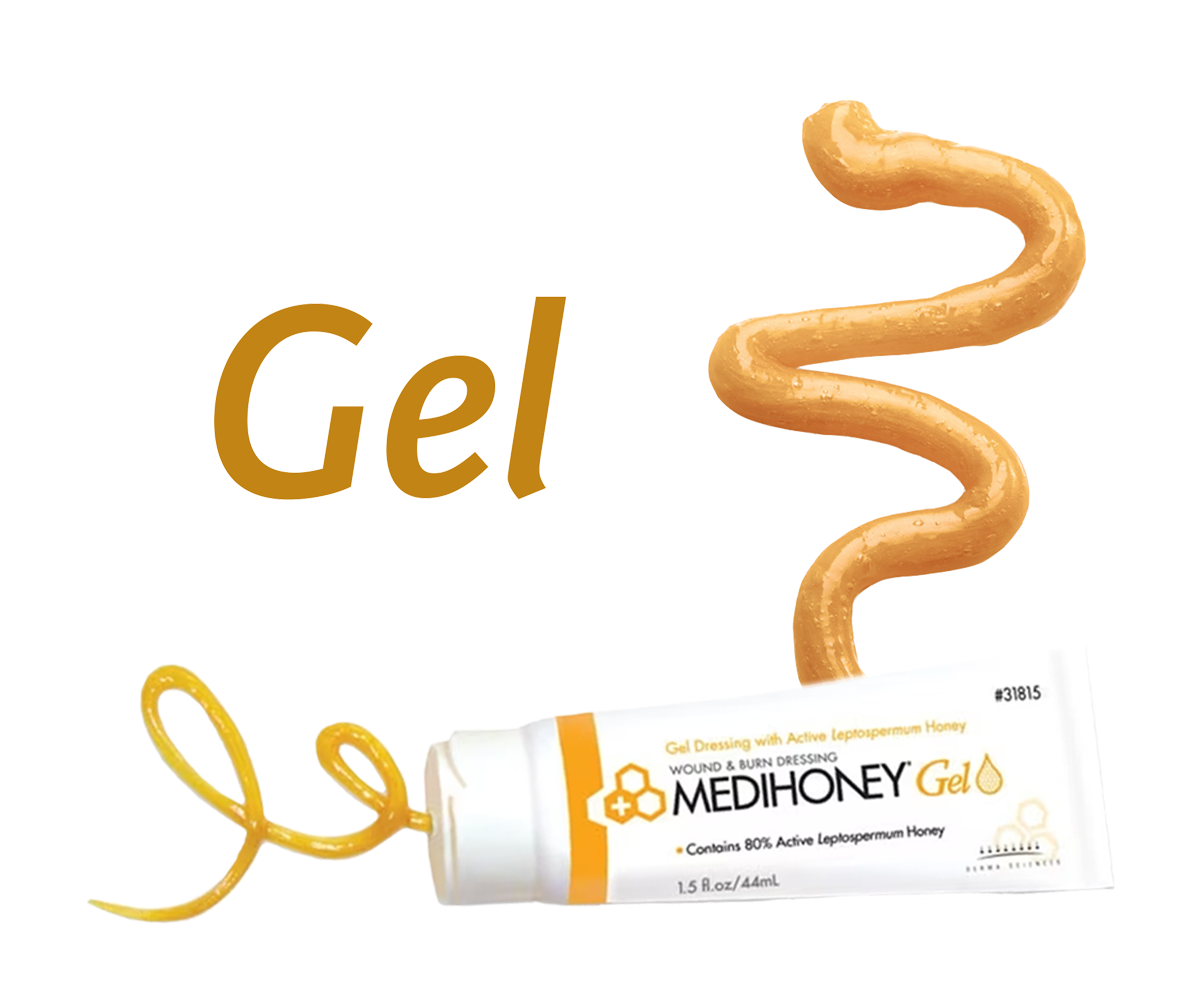
• Designed to support clinical need, MediHoney Gel combines 100% Active Leptospermum Honey with natural gelling agents
• Offers a more viscous formulation with increased stability
• Designed for superficial to full thickness wounds and burns
• For lightly to moderately exuding wounds
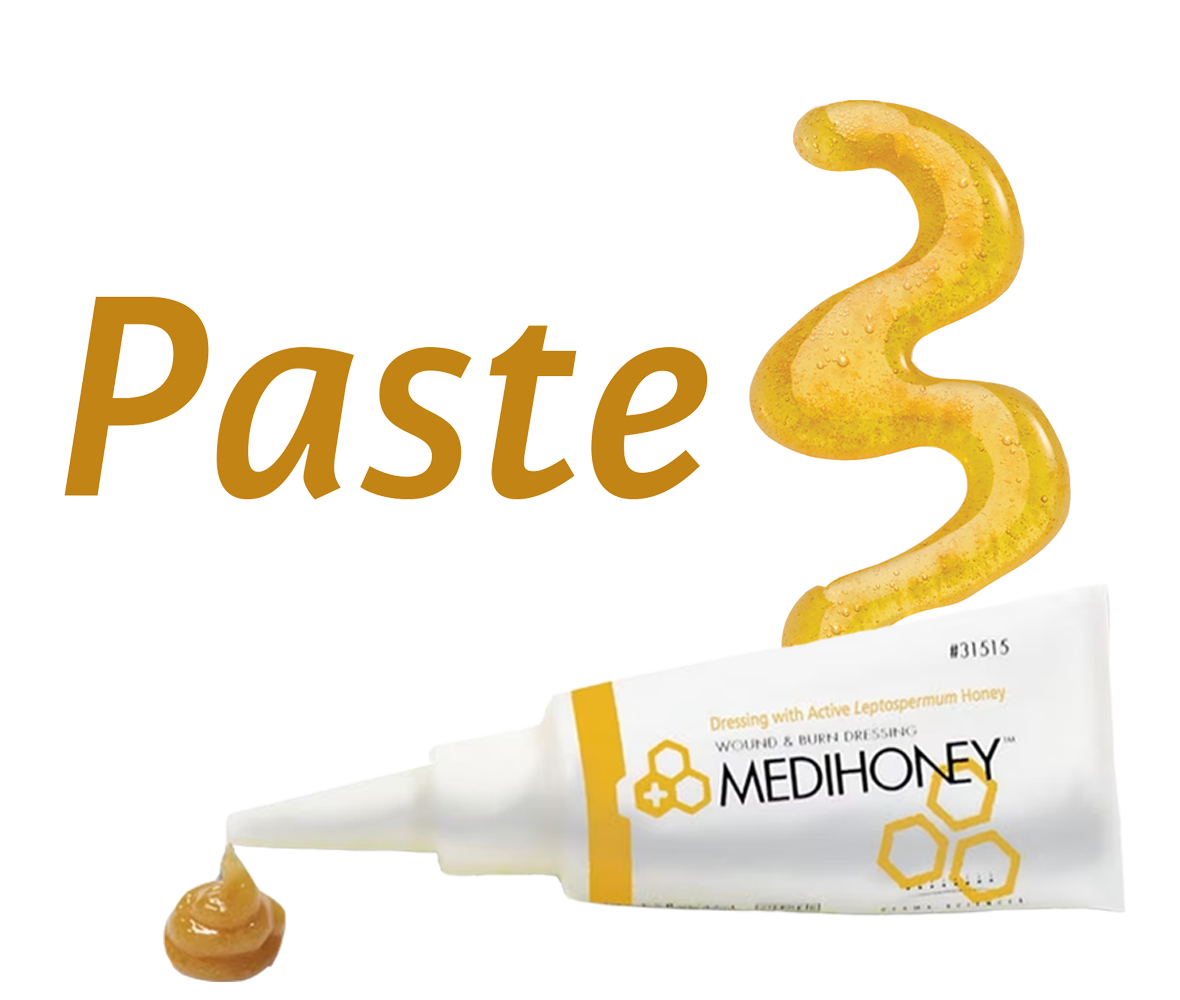
• 100% Active Leptospermum Honey
• Designed for deep tunneled or undermined wounds and burns
• For lightly to moderately exuding wounds
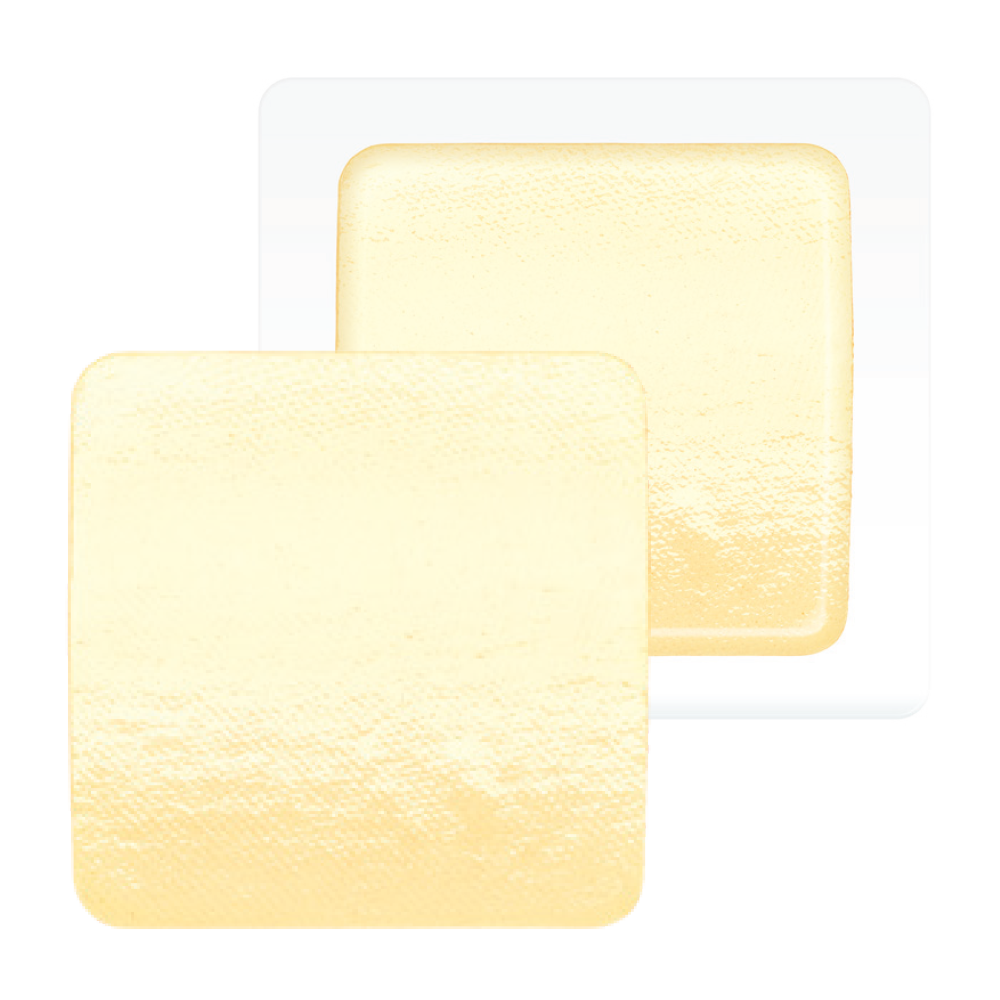
MediHoney® Hydrogel Sheet
(ALH content – 45%)
• Combines the benefits of ALH with the handling capability of Super Absorbent Polymer (SAP) technology
• Absorbs 2.5x the amount of fluid of leading hydrocolloids³
• Is cooling and soothing upon application
• Two versions: Adhesive and Non-adhesive
USAGE SUGGESTIONS:
• For non-draining to lightly exuding wounds
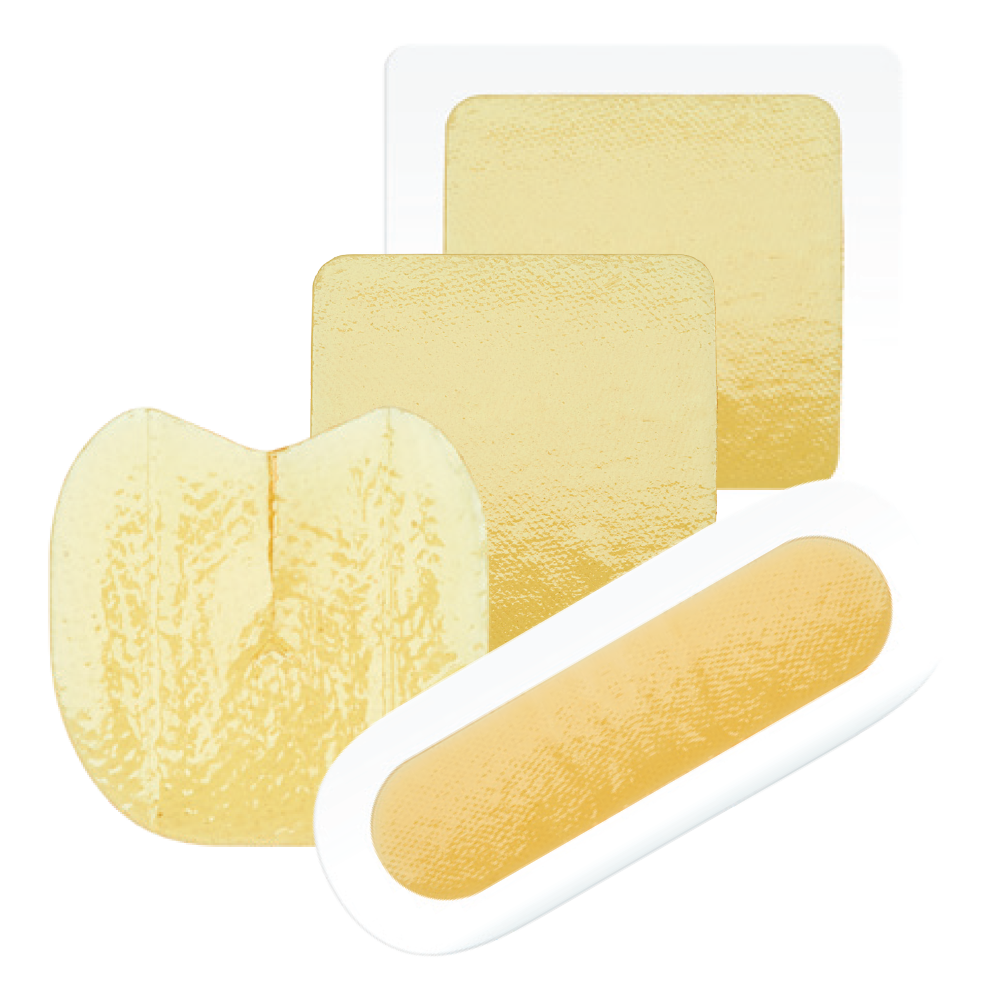
MediHoney® HCS
(ALH content – 63%)
• Combines the benefits of ALH with the handling capability of Super Absorbent Polymer (SAP) technology
• Absorbs 2.5x the amount of fluid of leading hydrocolloids³
• Is cooling and soothing upon application
• Four versions: Adhesive, Non-adhesive, Fenestrated, and Surgical
USAGE SUGGESTIONS:
• For non-draining to lightly exuding wounds
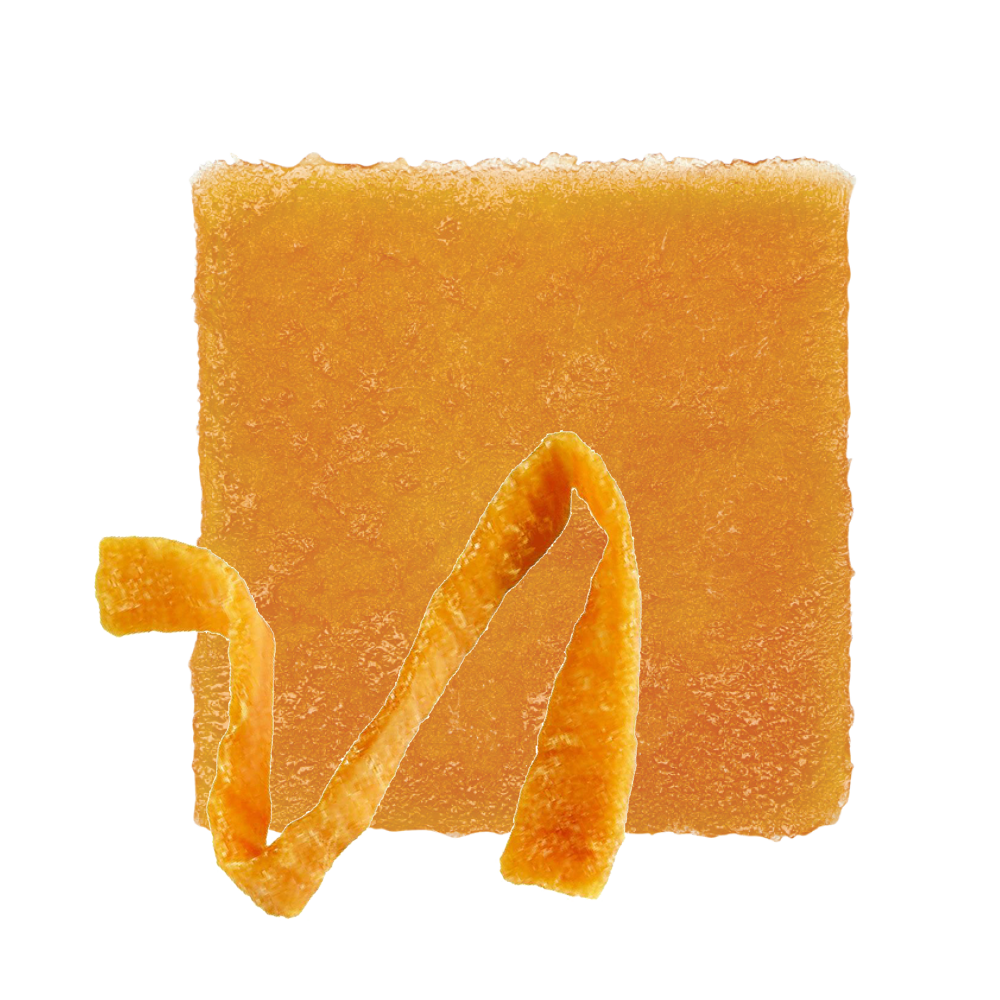
MediHoney® Calcium Alginate
(ALH content – 95%)
• Honey impregnated into a calcium alginate dressing
• As wound fluid enters the dressing, the honey is released while the dressing absorbs and forms a gel
• Two versions: Sheet and Rope
USAGE SUGGESTIONS:
• May be used to pack wounds in the same fashion as a typical calcium alginate or other gelling fiber dressing
• For moderately to heavily exuding wounds

Changing expectations and clinical outcomes in wound care
Dramatic changes have been seen in the field of advanced wound care within the last two decades. The practice of moist wound healing has significantly improved outcomes and has helped clinicians make knowledge-based decisions affecting the healing process. MediHoney® dressings, containing Active Leptospermum (Manuka) Honey (ALH), address many factors that delay healing, helps to promote a moist wound environment that aids and supports autolytic debridement.

Aids and supports autolytic debridement and a moist wound healing environment in acute and chronic wounds and burns. ⁵⁻⁸
Technology
Medical Grade Manuka Honey
• First cleared by the FDA in 2007 for use on acute and chronic wounds and burns
• High Osmolarity
• Low pH
• Authenticated and certified using a stringent set of systems and controls
• Standardized level of activity
• Produced under strict standards
• Ultra filtrated and sterilized by gamma irradiation, removing any bacterial spores without loss of product effectiveness³
Clinical Data
There are over 200 of pieces of evidence demonstrating MEDIHONEY dressings are effective for the management of acute and chronic wounds and burns
• 5 Randomized Controlled Trials (RCT)
• 50+ Peer-Reviewed In-vivo Studies and Papers published
• 30+ Peer-Reviewed In-vitro Studies and Papers published
• 130+ In-vivo Posters presented
Two Key Properties
High Osmolarity
• Due to its sugar content, dressings are hypertonic Paste
• Facilitates movement of fluid from an area of higher concentration, across a membrane, to an area of lower concentration
• Osmotic potential draws fluid through the wound, to the surface helping to liquefy non-viable tissue

Wound bed with slough, eschar and elevated pH
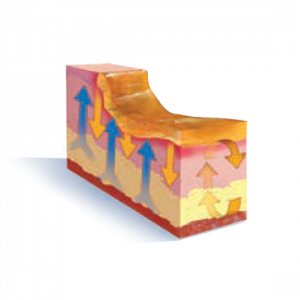
Brings wound fluid to the surface with endogeous enymes, loosening and liquefying necrotic tissue
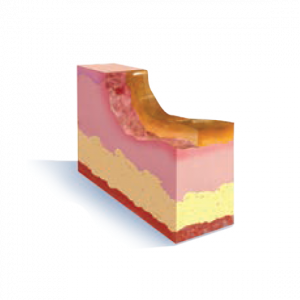
Non-viable tissue is removed
High Osmolarity
• MEDIHONEY has a low pH of 3.5-4.5
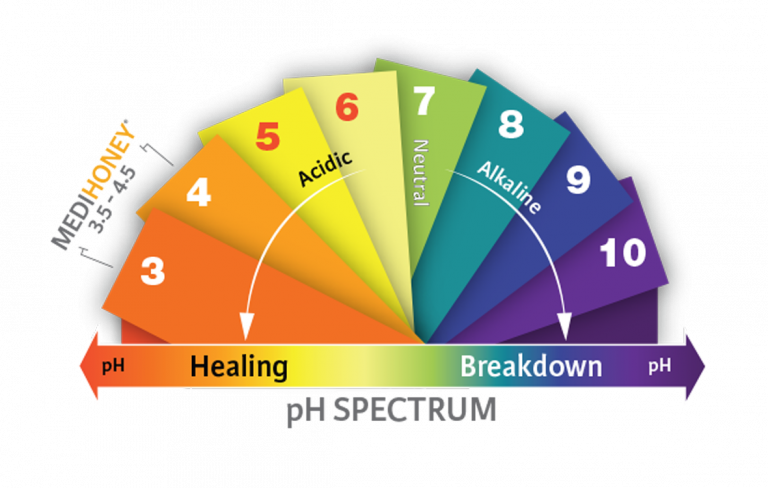
Effects of pH and Protease Activity
Protease Activity within a wound
• All wounds need a balanced amount of protease activity for healthy cell proliferation
• Proteases are enzymes released by inflammatory cells (macrophages and neutrophilis)
• At high pH levels, proteases are overactive and may cause wounds to stall
• Over-activity of proteases can result in breaking down tissue and slough production in the inflammation stage
